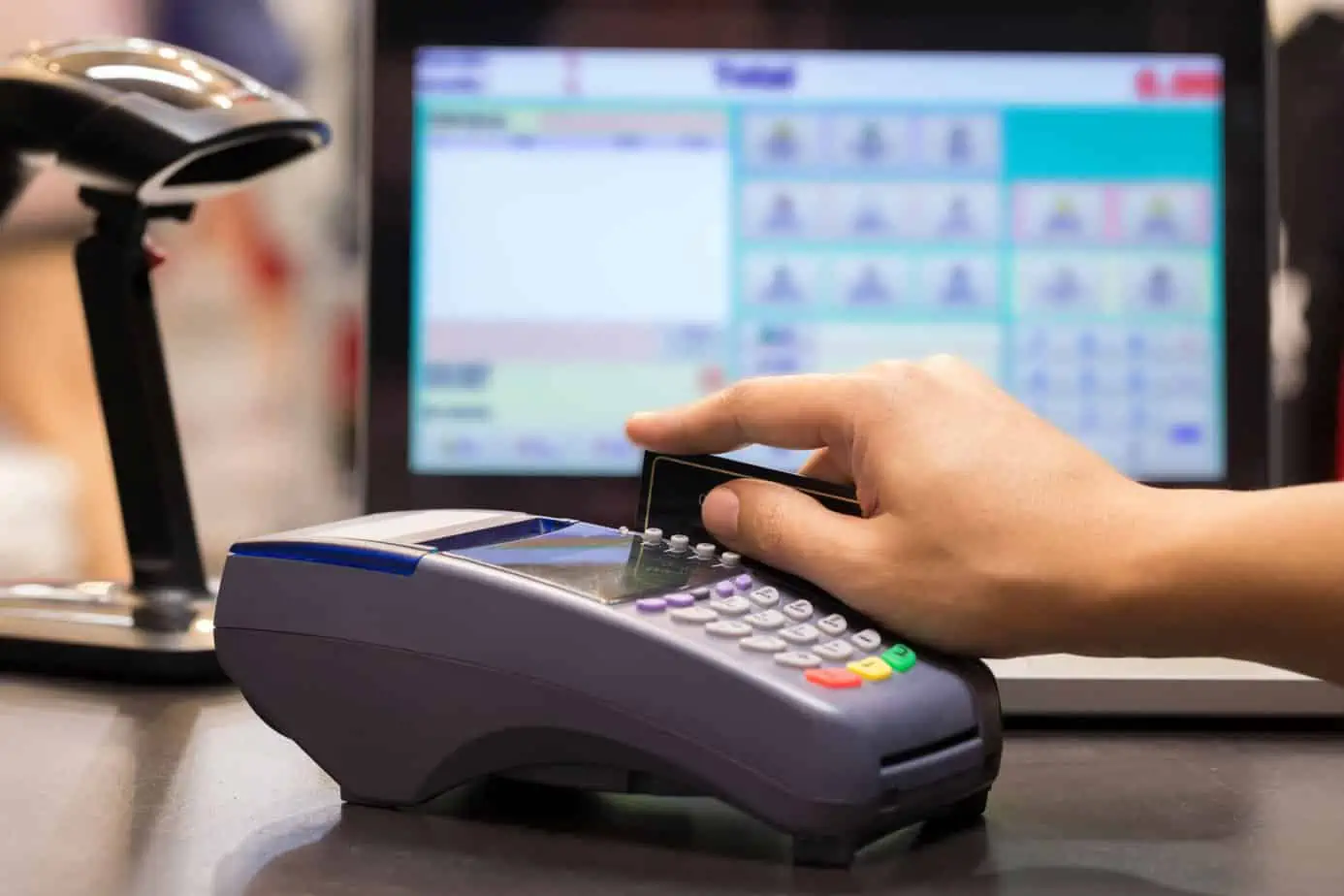Debit cards have increasingly become the preferred method of payment as it offers the same functionality and security that a credit card does while also limiting a person’s spending to the extent of what they have in their bank account. As an increasing number of customers today use debit cards or using them to link to a mobile wallet, it may be helpful for merchants to better understand what POS and Point of Sale charges are. Merchants need to understand the dynamics of processing debit card transactions.
When business owners know that consumers may question what they see in their bank account statements to identify a POS transaction, it will be advisable to ensure that the descriptors are clear to effectively avoid friendly fraud. Below we will further look at what is “POS”, a “descriptor”, “friendly fraud”, as well as how to efficiently navigate this system of payments
What is POS?
A POS system, aka Point of Sale system, is a single or a combination of devices that lets merchants record the transaction, process payments, and manage and run the business. It is made of three main components: software, hardware, and payment processing.
Examples of hardware are devices such as the card terminal that merchants use to accept payments swiping, dipping, or keying in credit or debit card information, or tapping a smartphone for mobile wallet payments. Hardware also includes a receipt printer and a cash drawer. The POS software combines all the operational functions into a single suite allowing businesses to view customers’ transaction history, manage inventory, manage employees, or access reporting. Finally, payment processing is embedded into the POS systems to process the transactions.
Once a customer has paid with their debit card at a merchant, their bank statement will show a term such as “POS Debit”
What is POS Debit?
All transactions processed at a point of sale system are referred to as POS, those transactions processed using a debit card are referred to as POS Debit. That term, or simply “POS”, is the term that shows up in the description on a consumer’s bank statement to identify the transaction. This is also known as the “descriptor”.
The descriptors used by merchants can help clarify what that transaction is related to, as that is what will appear on the bank statement. If the descriptor is ambiguous, it may be flagged as fraudulent, either by the bank or the customer.
Are there other types of charges/ descriptors?
It is important how debit card payments are processed as they can determine the descriptors associated with them.
PIN transactions – when customers choose the debit option at the POS, they are required to enter their ATM pin code. This is the most common form of debit card payment processing. This type of transaction will carry the “POS Debit” or “POS” descriptor on the bank statement.
Contactless transactions – these payment types are processed with the use of a mobile wallet that has a debit card linked to it or an EMV chip-enabled debit card. Such transactions are processed via the fear field communication functionality of the POS system and a smart device, such as a smartwatch, smartphone, or tablet, instead of it being PIN authenticated. This type of transaction will carry the “DBT Purchase” descriptor on the bank statement.
Online transactions – also known as card not present transactions, occur when a payment is keyed-in, i.e. an online payment or e-commerce transaction. This type of transaction will also carry the “DBT Purchase” descriptor on the bank statement.
What are descriptors, and why are they important?
When customers review their monthly bank statement, they will look at the explanation of the charges to ensure there is nothing out of the ordinary. This explanation, or description, is called a descriptor, a merchant descriptor, and is used interchangeably with “Bank statement description”. They all denote the same thing. It is the line in the bank statement which identifies and explains the transaction.
So why are descriptors necessary? For one, a vague or ambiguous descriptor can automatically alarm customers who may not recognize the transaction, resulting in the filing of chargebacks. Chargebacks are disputes against a transaction customers see on their statements, raised with their bank. In the event of a chargeback arising, the issuing bank withholds funds from the business until the authenticity of a transaction is decided on. Funds are released to businesses if the bank rules in their favor, otherwise charges are reversed if on the customer’s card. This process is often lengthy and cumbersome and requires a substantial amount of documentation. This is often referred to as friendly fraud. It is so rampant, that friendly fraud is estimated to measure at more than $50 billion annually.
Furthermore, merchants have almost no recourse against friendly fraud. The best defense against friendly fraud is to do everything possible to avoid chargebacks, to begin with, such as having appropriate descriptors that sufficiently identify transactions.
The best descriptors
One of the best types of descriptors is a “soft billing descriptor”. These can be very effective in displaying just the right amount of information explaining a transaction. A soft billing descriptor is often limited to 25 characters, consisting of a three-letter acronym showing the business name, additional details of the product or service involved in the transaction, ending with the merchant customer support number.
Debit cards are a much larger part of the payments pie. They have the same security benefits and offer consumers additional benefits such as limiting overspending or spiraling into debt. This change in spending habits carries its dynamics for payments processing that businesses need to understand well and adapt their POS systems for. Better understanding what POS and Point of Sale charges are, along with terms such as descriptors and how they hurt and benefit a business may be tantamount to surviving.

